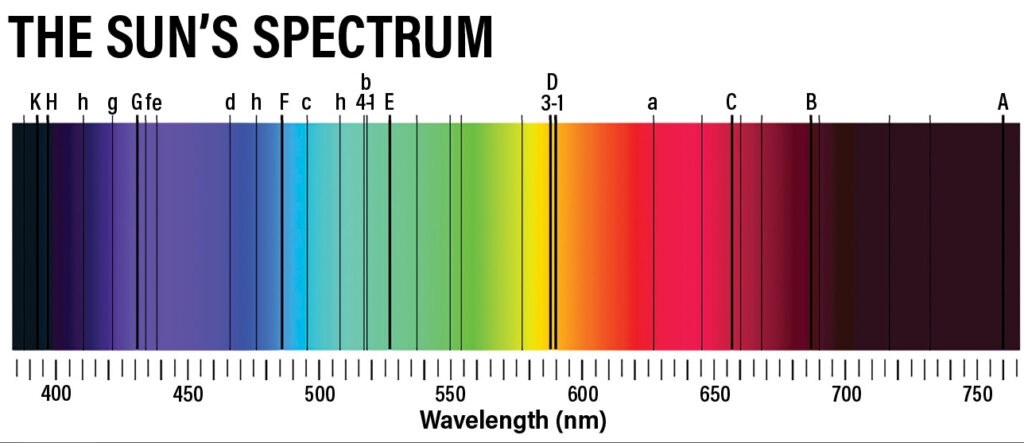The Substance – Part 10 of The Chemistry of Time
The calendar is very real and the system is very intriguing. Together, they form a model of a world that is able to account for the panorama of experience we know to exist. The depth of information provided has remarkable utility and clarity, and as you unravel each layer of the system it manages to reinforce itself with increasing elegance until the world around you seems to take on a structure, order, and framework. In the case of the natal chart of your birth it will fit you perfectly like a tailored suit that wraps and frames your contours so well that it is if you are wearing nothing at all. In the case of the events of the world around you it will be as if you are the only man with an umbrella on the morning commute of a sunny, blue-sky day. By evening the darting and dashing of your stunned contemporaries under overhangs and over puddles will delight and amuse while you stride through the thunderstorm, able to be present in the moment and feel its joy, your hair and shoes unperturbed and covered. In the case of your memories the stories and mysteries of your life past will take on narratives you may have never imagined and bring a sense of meaning to things you may have otherwise found unremarkable. The concept of a good thing or a bad thing will evaporate into nuance and appreciation for that which has clearly forged your present existence and which directs you reliably to the places you are best suited to be. In order to adhere this new data to your experience of life it is inevitable that you will ask yourself how any of this is possible at all?
The questions of meaning and purpose are philosophical and for most are answered through their religious cosmology. All people have a religion – a system for modeling the world – and there is no contradiction between that and what is shown by the astrological calendar and system. Cosmology is fundamental to humans and it is possible for us to believe all manner of things if they sufficiently explain and guide us through our life – that is what it is for. Separate from this are the sciences, which seek to measure and describe physical phenomenon to enable us to interact with our physical world more effectively. Science that “works” is called engineering as that is the ultimate purpose of knowing and measuring these things. Astrology is able to engineer effectively – those who doubt have never tried – so we are well-served to explore the manner by which it does so. This is officially unknown and a great mystery that has been speculated and theorized upon for millennia.
Ptolemy’s speculations in Tetrabiblos (from the second century AD in the midst of the Hellenistic period from which we derive our knowledge of the system) is famously incomplete, but interesting. It is known because the books have survived intact and have been included on the shelves of the fanciest libraries and in the curriculum of great universities, and because Ptolemy was otherwise well-regarded for his scientific knowledge. Ptolemy’s initial approach to this question is excellent and demonstrates that he is working from the system rather than the cosmology and religious model to which he adheres. His inability to complete the argument is because compared to us today he has almost no information about the physical world to build upon. Fortunately we do not have that limitation and as such are able to extend his speculations much further.
To begin with, the phenomenon of correlation between celestial bodies and the times requires a medium through which the information can be passed. We know as Ptolemy knew that the system is based upon the Solar Calendar. At the center of everything is the Sun and nearly the entire structural arrangement of the system is connected to solar indications. As such we can conclude that everything comes from the Sun. What comes from the Sun? Light comes from the sun. We can call it “sunlight” or “solar radiation” in order to sound fancy (ok ok and also to allow specificity) but it’s rather simple – light pours down onto the Earth from the Sun constantly, in huge volumes, and always has. The thing about sunlight is that we take it more or less for granted because it is always there. Like fish who swim their entire lives in water we can barely imagine a world without it and the typical person does not perceive light as a substance with physical characteristics and parameters.

Light is a substance however. It is almost “invisible” to us normally but from the right angle with the right contrasts you can see the light. The first time this happens to you might be rather astounding and rather magical. Here you have been bathing in this material for all of this time and never knew it. You are a fish in the water and you have just discovered water. Wow, look at that, there it is. To see the light is an idiom in probably every human language and culture and variants of it such as illumination and enlightenment are significant enough to form basic foundations of entire religious cosmologies on their own. Something about the light and how it surrounds us has been very compelling for a very long time. In Ptolemy’s time the science of Optics was also developed. They studied the way light moved and reflected and could be directed. They were the first to develop a sort of lens through which the direction of light could be altered enabling a person with inaccurate vision to see more clearly. They knew about light and were very interested in it and that surely informs much of Ptolemy’s approach. Ptolemy’s society was advanced beyond what most today assume but it was not the 21st century in the United States of America. We have spectrometers.
Spectrometers for light have actually existed since the 17th century and we now have an enormous amount of knowledge about light and optics that didn’t exist then much less in Ptolemy’s time. The significance of a spectrometer is that it is able to break the light up into its component parts. For the first time these tools allowed us to understand that light, or a ray of light, was something that was composed of different parts. Similar to how Chemistry describes water as H20, spectroscopy enables us to describe light according to its particular components. Wait, we just discovered that light is a substance and now we’re being told that it isn’t all the same and that there are different types of light depending upon their internal makeup? How deep does this rabbit hole go???
The answer is that we do not yet know. The study of light is rather advanced but certainly not complete. What we do know tells us that light is unbelievably important, foundational, and a key component to life. Plants for example absorb the physical substances from light in order to fuel their growth and existence. What’s interesting is that this process, called photosynthesis, can work differently from one organism to another. Further, plants do not utilize the entire contents of a ray of light necessarily but often filter and accept only one certain colors of light. Color, I should mention, is a phenomenon of light itself. See below:

Color is merely a product of the wavelength of a ray of solar light. If it’s long, it appears red. If it’s short, it appears blue. Certain plants only like red light and blue light. They reflect the green light which is basically why plants are green. There are also entire ranges of “colors” which we cannot even see. Our eyes are tuned to a range of “colors” called the visible spectrum but at all times there are myriad other things going on which are invisible to us, such as infrared. Colors notably work the same way as chemistry does – some are elemental “spectral” colors whereas others can only exist when spectral colors are combined in various quantities and mixtures. Funny how that theme keeps coming up. Anyway, what matters for our purposes is that light consists of many parts and combinations which produce different results when they interact with other substances as well as itself.
The astrological calendar divides the sky into sections called the zodiac and asks us to understand that light passing through different sections of the sky has different properties, which can be understood. It gives us a spectrometer and observes things similar to the sections of color in the visible spectrum. The zodiac does not give us a theory of electromagnetic radiation but the spectrometer was useful for centuries prior to understanding how it worked or precisely what it showed or how to manipulate that. It was the consistency of result that was fundamentally important – light separated through a prism produces a rainbow and the order of the colors is always the same. The calendar is more than the zodiac, and the zodiac we have discussed is just the first of several layers of division shown by the calendar, but that is for another time.
Time and life itself as it unfolds upon the Earth is substantial. Things are real and they change, move and develop according to known rules. Time has a character and traits and properties and these must be formed via some medium which can deliver the information which forms them. The astrological system is ordered and structured and built entirely upon a framework of measuring solar light. Solar light is that which we bathe in and which produces nearly every effect we recognize on Earth – from heat to color to the ability to see at all. Light absorption is fundamental to the production of chemical elements which form our atmosphere. Light itself fuels the subsistence of countless life forms that absorb different portions of it based upon their own characteristics and properties. Light behaves according to known rules and properties and we can measure, predict, and manipulate it accordingly. The structural themes of light – its physical boundaries and mode of operation – are well understood. These structural themes are consistent with those employed by the astrological system in its explanation of how time is formed.
Now do you see the light?


Leave a Reply